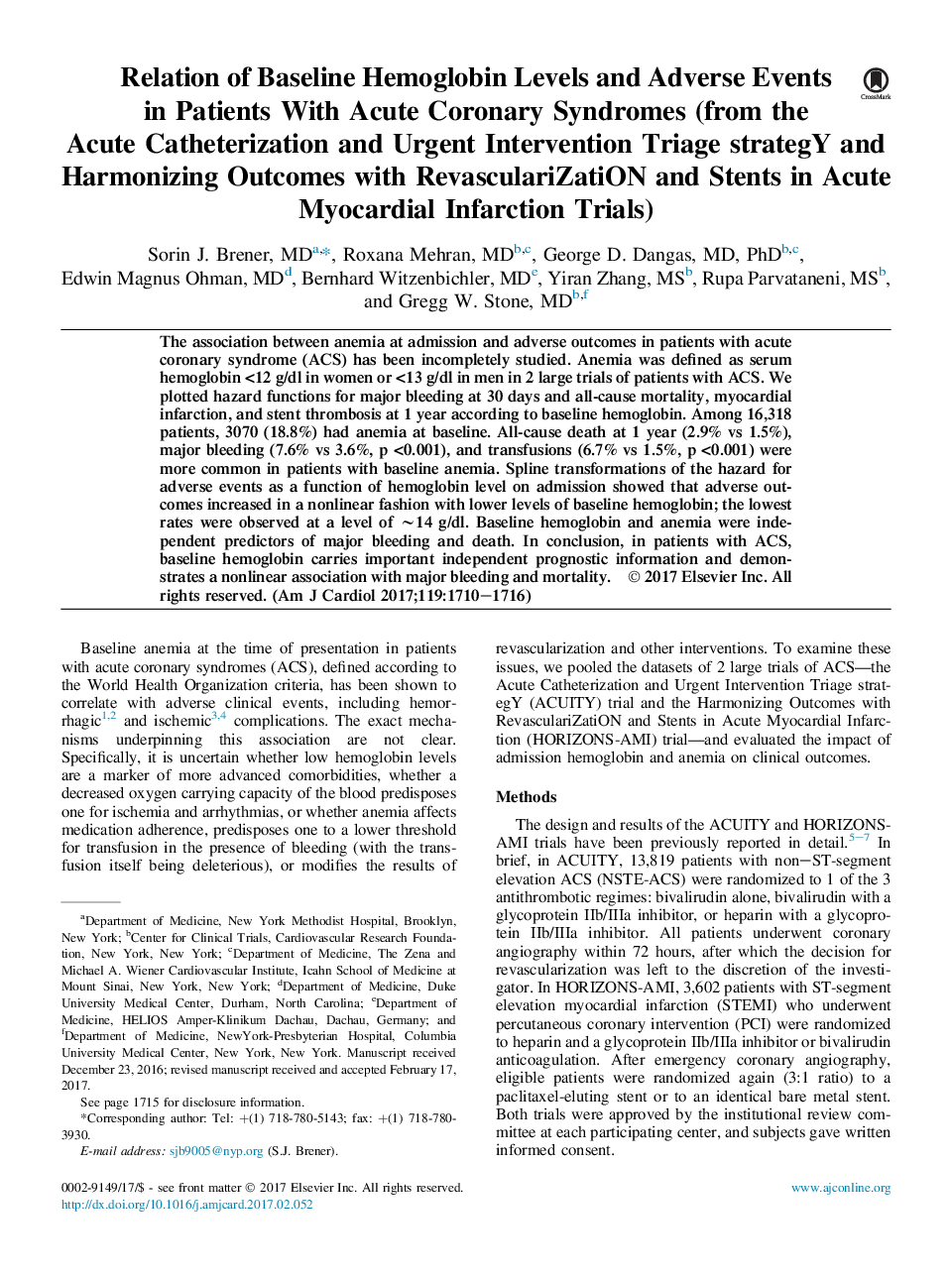| Article ID | Journal | Published Year | Pages | File Type |
|---|---|---|---|---|
| 5594891 | The American Journal of Cardiology | 2017 | 7 Pages |
Abstract
The association between anemia at admission and adverse outcomes in patients with acute coronary syndrome (ACS) has been incompletely studied. Anemia was defined as serum hemoglobin <12Â g/dl in women or <13Â g/dl in men in 2 large trials of patients with ACS. We plotted hazard functions for major bleeding at 30Â days and all-cause mortality, myocardial infarction, and stent thrombosis at 1Â year according to baseline hemoglobin. Among 16,318 patients, 3070 (18.8%) had anemia at baseline. All-cause death at 1Â year (2.9% vs 1.5%), major bleeding (7.6% vs 3.6%, p <0.001), and transfusions (6.7% vs 1.5%, p <0.001) were more common in patients with baseline anemia. Spline transformations of the hazard for adverse events as a function of hemoglobin level on admission showed that adverse outcomes increased in a nonlinear fashion with lower levels of baseline hemoglobin; the lowest rates were observed at a level of â¼14Â g/dl. Baseline hemoglobin and anemia were independent predictors of major bleeding and death. In conclusion, in patients with ACS, baseline hemoglobin carries important independent prognostic information and demonstrates a nonlinear association with major bleeding and mortality.
Related Topics
Health Sciences
Medicine and Dentistry
Cardiology and Cardiovascular Medicine
Authors
Sorin J. MD, Roxana MD, George D. MD, PhD, Edwin Magnus MD, Bernhard MD, Yiran MS, Rupa MS, Gregg W. MD,
